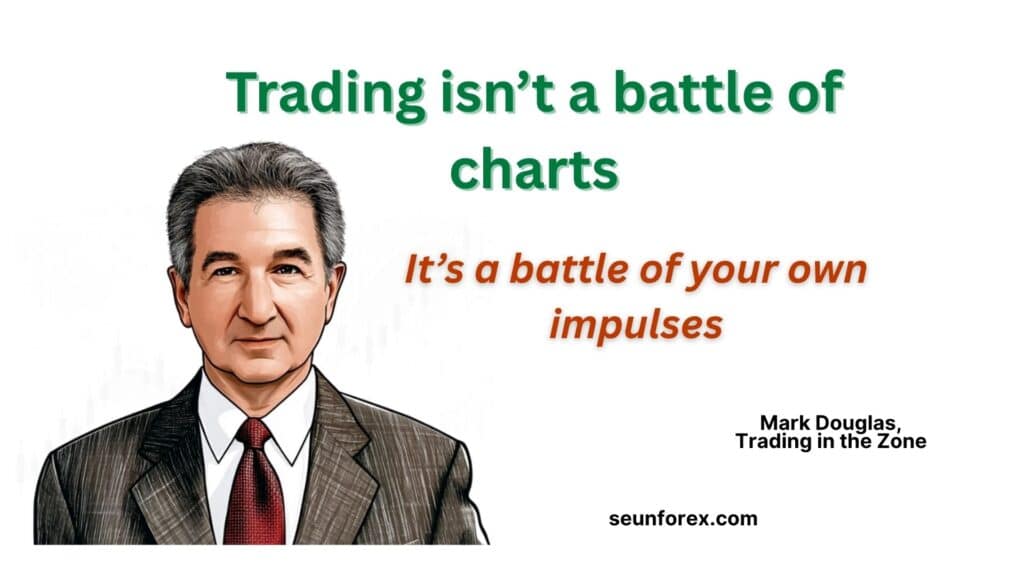
You’re Not Alone
Starting your trading journey is exciting. It feels like you have found a new way to take control of your money. You read the charts. You place your trades. The potential seems endless.
But then, reality hits.
A trade moves against you. Fear sets in. You see a small profit and grab it too fast. Or you watch a loss grow bigger and bigger, hoping it will turn around.
If this sounds familiar, you are not alone. Every single successful trader made these same common trading mistakes at the start. The key is to learn from them before they cost you serious money.
Understanding risk management in trading is also essential if you want to survive the learning curve. Resources like Investopedia’s guide to risk management explain how traders protect their capital and make smarter decisions a crucial step in avoiding many of these beginner trading mistakes.
This guide will show you how. Let’s dive into the 10 most common trading mistakes and, more importantly, how you can avoid them.
Mistake #1: Trading Without a Plan (The “Winging It” Disaster)
You would not build a house without a blueprint. So why would you trade without a plan? A trading plan is your blueprint for the markets. It is your set of rules.
The Mistake: Jumping into trades because of a “gut feeling” or a tip you saw online. This is not trading. It is gambling. Without a plan, your emotions are in charge. You have no clear reason for entering or exiting a trade. This leads to random, unpredictable results.
How to Avoid It:
- Write it down. Your plan must be on paper or in a document. It should answer these questions:
- When will I enter a trade? (What specific condition must be met? For example, “I will buy when the 50-day moving average crosses above the 200-day moving average.”)
- When will I exit for a profit? (What is your profit target?)
- When will I exit for a loss? (What is your stop-loss?)
- How much money will I risk on this trade? (See Mistake #2).
Think of it like this: Your trading plan is the boss. You are the employee. Your job is to follow the boss’s orders, no matter how you feel. This removes emotion and creates discipline.
Mistake #2: Risking Too Much on One Trade
This is the mistake that can end your trading account fast. Greed tells you to bet big for a huge win. But trading is a marathon, not a sprint. Survival is your first priority.
The Mistake: Putting 50% of your money into one “sure thing” trade. If that trade fails, you have lost half your money. It is very hard to come back from that. A string of just two or three losing trades like this can wipe you out completely.
How to Avoid It: Use the 1% Rule.
- Never risk more than 1% of your total trading account on a single trade.
- If you have a $10,000 account, that means you should not lose more than $100 on any one trade.
- This protects you. Even if you have a string of losing trades, you will still have most of your capital. You can keep trading and recover. This rule is the cornerstone of risk management, a concept we explore in depth in our guide, Mastering Risk Management: The 1% Rule and Beyond.
Mistake #3: No Stop-Loss Orders (The “Hope is Not a Strategy” Error)
A stop-loss is a pre-set order that automatically sells your trade at a certain price to limit your loss. It is your safety net. It is your pre-planned exit strategy for when a trade goes wrong.
The Mistake: Buying a stock and then watching it fall. You tell yourself, “It will come back, I’ll just wait.” This is how a small loss turns into a devastating one. Hope is not a trading strategy. Letting losses run is the single biggest reason beginners blow up their accounts.
How to Avoid It:
- Always set a stop-loss. The moment you enter a trade, you must know the exact price where you will admit you are wrong and get out.
- Make it automatic. Use your trading platform to place the stop-loss order as soon as you buy. This removes emotion from the decision.
- Respect it. Never move your stop-loss further away because the trade is going against you. That is like taking off your seatbelt because you are crashing. Honor your stop-loss like a contract with yourself.
Mistake #4: Letting Losses Run and Cutting Profits Short
This is the opposite of what a successful trader does. The real goal is to let your winning trades run and cut your losing trades short. Many beginners do the reverse, which is one of the most common trading mistakes that stop traders from growing. It’s often described as “riding your winners and killing your losers.”
The Mistake
You get nervous and close a trade too early as soon as it shows a small profit. But when a trade goes against you, you hold onto it, hoping it will recover. This emotional reaction is one of the biggest beginner trading mistakes and shows how trading psychology can work against you. Over time, your losses become larger than your wins a pattern that leads to slow but certain failure.
How to Avoid It: Use a Risk-Reward Ratio
To avoid this trap, focus on solid risk management in trading. Before entering any position, plan your potential profit and your acceptable loss. A smart trading tip for beginners is to use a 1:2 risk-reward ratio. That means for every $1 you risk, you aim to make $2.
For example, if your stop-loss is $50 away, your target profit should be at least $100 away. This simple rule makes the math work in your favor. Even if only half your trades win, your gains can still outweigh your losses.
Consistently applying this approach strengthens your trading psychology and helps you avoid one of the most common trading mistakes new traders make letting emotions, not strategy, decide their outcomes.

Mistake #5: Overtrading (The “Action Junkie” Trap)
Overtrading means making too many trades. It can mean trading when there are no good opportunities. Or it can mean risking too much of your money in a short time. It often comes from boredom or the need to “get back” at the market after a loss.
The Mistake: Feeling like you always need to be in a trade to make money. You start forcing trades that do not fit your plan. This leads to sloppy decisions, high transaction costs, and unnecessary losses. You are trading for the sake of trading, not for the sake of making good decisions.
How to Avoid It:
- Quality over quantity. It is better to make one good trade per week than five bad ones per day.
- If in doubt, stay out. If a trade does not perfectly match your plan, do not take it. The market will always be there tomorrow.
- Set trade limits. Give yourself a maximum number of trades you can make per day or week. This imposes discipline and forces you to be more selective.
Mistake #6: Chasing the Market (FOMO)
FOMO stands for “Fear Of Missing Out.” You see a stock rocketing upward and you panic-buy at the very top. Then it reverses, and you are left holding a big loss. Chasing price is a classic sign of emotional trading.
The Mistake: Buying something just because it is going up fast. You are entering too late, after the big move has already happened. You are buying when the smart money is starting to sell.
How to Avoid It:
- Stick to your plan. If the trade does not match your entry rules, it is not a trade. It is a gamble. Let it go.
- Wait for a pullback. Markets rarely go straight up. Wait for the price to come back down to a smarter, more strategic level to buy.
- Remember: There are over 8,000 stocks and countless other assets. There will always be another opportunity. You never need to chase one. Missed money is better than lost money.
Mistake #7: Not Keeping a Trading Journal
A trading journal is one of the most powerful tools for improvement, yet most new traders ignore it. Keeping a detailed record of every trade helps you see patterns, recognize emotional triggers, and track your progress over time. It’s one of the best trading tips for beginners that separates disciplined traders from those who rely on luck.
The Mistake
Many beginners don’t track their trades. They forget why they entered, why they exited, and what they were feeling at the time. Without this information, you’re likely to repeat the same errors again and again. This is one of the common trading mistakes that limits growth because you cannot fix what you don’t measure.
A poor record-keeping habit also hides key elements of trading psychology—your fears, impulses, and overconfidence. When you don’t study these, you lose valuable insight into your own decision-making process.
How to Avoid It: Keep a Detailed Trading Journal
After every trade, take a few minutes to record essential details:
- The asset, date, and time of the trade
- Why you entered (attach or save a chart screenshot)
- Your entry price, stop-loss, and target profit
- The final exit price and profit or loss
- How you felt during the trade — confident, nervous, greedy, or patient
Then, review your journal every weekend. Look for recurring patterns. Are you breaking your stop-loss rule too often? Are your best trades linked to specific setups or times of day?
Keeping this journal is a form of risk management in trading, because it helps you identify behaviors that lead to unnecessary losses. Over time, it transforms experience into expertise. The more honest your records are, the faster you’ll improve and avoid repeating beginner trading mistakes.

Mistake #8: Ignoring the Overall Market Trend
A common saying in trading is, “The trend is your friend.” This means it’s much easier to make money when you trade in the same direction the overall market is moving. Fighting the trend is like trying to swim against a powerful current one of the most common trading mistakes beginners make.
The Mistake: Trying to buy a stock when the entire market is in a steep downtrend. You’re fighting the current. Even a strong company’s stock can fall in a weak market. This is often called “catching a falling knife,” and it rarely ends well.
How to Avoid It:
Do a top-down analysis before placing any trade:
- What is the overall market doing? (Is the S&P 500 trending up or down?)
- What is the sector doing? (Is the tech sector strong or weak?)
- Now, examine the individual stock or asset.
It’s always easier to swim with the current, not against it. In an uptrend, focus on buying opportunities. In a downtrend, be cautious or consider short-selling—if you understand the risks.
If you’re unsure how to read market direction effectively, check out this comparison of top trading platforms —TradingView vs MetaTrader: Platform Comparison — to understand which tools make market trend analysis simpler and more precise.
A deeper dive into creating a complete trading plan can be found in our article What is a Trading Plan and How to Create One?, which covers broader market analysis techniques.
Mistake #9: Not Understanding Your Strategy
Many beginners find a strategy online—like a moving average crossover—and start using it without knowing how or why it works. They treat it like a magic button for profits.
The Mistake: Using a strategy you do not understand. When it has a few losing trades (which every strategy will), you lose confidence and abandon it. Then you jump to another strategy, and the cycle repeats. This is called “strategy hopping,” and it prevents you from ever mastering one approach.
How to Avoid It:
- Paper trade first. Test any new strategy with fake money for at least a month or two. See how it performs in different market conditions.
- Learn the “why.” Why does this strategy work? What are its strengths? What market conditions cause it to fail? Know its win rate and average profit/loss.
- Commit. Once you find a strategy that fits your personality and that you understand, stick with it long enough to see if it works. Give it a fair chance through both winning and losing periods.
Mistake #10: Letting Emotions Control Your Trades
This is the root of all the other mistakes. The market plays on our two strongest emotions: fear and greed. Greed makes you hold winners too long and risk too much. Fear makes you sell winners too early and let losers run.
The Mistake: Making decisions based on panic or excitement instead of logic and rules. You are human, and the market is designed to trigger your emotional responses.
How to Avoid It:
- This is where your plan, your stop-loss, and your 1% risk rule come together. These tools are not just about money—they are about psychology. They automate your decisions and lock your emotions out of the process. You are following a system, not a feeling.
- Take a break. If you have a big loss or a big win, step away from the computer for a while. Do not make another trade while you are emotionally charged. Your judgment will be impaired.
- Work on your mindset. Trading is a mental game. Practices like meditation, exercise, and visualization can help improve the discipline and emotional control needed for trading success. For more on this, see our guide The Psychology of Trading: Taming Your Inner Investor.
Conclusion: Your Path to Smarter Trading
Making mistakes is a normal part of learning to trade. No one becomes a skilled trader overnight. The goal is not to avoid every mistake but to stop repeating the costly ones. Every error you learn from strengthens your discipline and improves your trading psychology.
By understanding these common trading mistakes, you have already taken a major step toward becoming a smarter and more consistent trader. You now have clear and practical trading tips for beginners that can protect your capital and improve your strategy.
Keep this list close. Print it out, place it by your desk, and review it often. Combine it with strong risk management in trading and use your trading journal as your accountability tool. Over time, your results will become more consistent and your confidence will grow.
Remember, the learning curve does not have to be painful or expensive. You can shorten it by learning from others who have already made these beginner trading mistakes. Approach each trade with patience, discipline, and self-awareness.
Trade with a plan, trade with purpose, and trade with confidence. Your future self will thank you for mastering not just the market but your mindset.